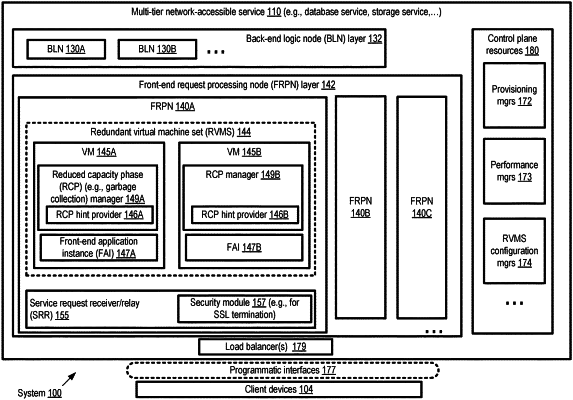| CPC G06F 12/0276 (2013.01) [G06F 9/45504 (2013.01); G06F 11/3612 (2013.01); H04L 67/34 (2013.01); H04L 67/51 (2022.05)] | 20 Claims |

|
1. A system, comprising:
one or more computing devices;
wherein the one or more computing devices include instructions that upon execution on or across one or more processors cause the one or more computing devices to:
cause to be instantiated, at a host of a network-accessible service, (a) a service request receiver, (b) a first virtual machine executing a first instance of an application which performs one or more operations to fulfill respective service requests, and (c) a second virtual machine executing a second instance of the application;
wherein the first virtual machine is configured to:
schedule a first indication of an impending commencement of a garbage collection of the first virtual machine based at least in part on a time interval by which the first indication is to precede the commencement of the garbage collection; and
prior to the commencement of the garbage collection by at least the time interval, provide, from the first virtual machine to the first instance of the application executing on the first virtual machine, the first indication of the impending commencement of the garbage collection of the first virtual machine; and
wherein the service request receiver is configured to:
obtain, from the first instance of the application, a second indication of the impending commencement of the garbage collection;
perform one or more operations of a security protocol to extract a service request from an encrypted set of bytes received via a network connection;
determine, based at least in part on the second indication, that the service request is not to be directed to the first instance of the application; and
direct the service request to the second instance of the application.
|